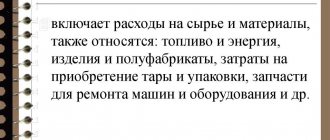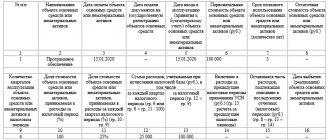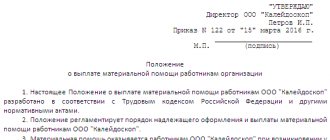Many enterprises carry out research and development work, the main goal of which is the development and implementation of innovative modern technologies that reduce costs and produce higher-quality new products. R&D expenses, like any other expenses, must be reflected in the accounting accounts, no matter what form they take - tangible or intangible. In this situation, it should be taken into account that accounting and tax accounting are different. In the article we will look at how accounting and tax accounting of R&D is carried out at an enterprise, what are the standard entries for its reflection
The essence of R&D in an organization
The essence of R&D is to carry out special activities related to the creation of completely new or improvement of existing products, optimization of technological processes or management methods. It should be taken into account that the result of R&D must be something new and unique, for example, a product or technology - the introduction into the production and economic process of something already created earlier is not the resulting indicator of R&D.
Research and development work can be carried out by both specialized design and research bureaus and directly commercial enterprises for their own purposes or as services to an outside organization.
When carrying out interaction between the two parties, an agreement is concluded, to which a technical specification is attached, according to which the contractor is obliged to complete the task assigned to him, and the customer (contractor) is to check and accept the results obtained. The contract should be one of two types: (click to expand)
| Contract type | Description |
| Research contract | With this type of relationship, the contractor carries out research work specified in the direct terms of reference. The result of the work is information that is obtained through calculations and various studies. |
| Contract for development work | With this type of relationship, the contractor carries out development work, as a result of which a new product or technology is created, for which technical documentation is mandatory. The resulting performance indicator is a new product or new technology, as well as completed documentation for it. |
Use of intangible assets in 1C
Content:
1. Receipt of intangible assets
2. Acceptance of R&D for accounting
3. Disposal of an Intangible Asset by Transfer
4. Write-off of an Intangible Asset
Receipt of intangible assets
An intangible asset is created by performing R&D (Research and Development Work) or purchased from third parties. For acquisitions, this is the actual cost of acquiring intangible assets (intangible assets) accounting account 08.05, and for R&D, this is the cost of creating the asset (work) accounting account 08.08.
Reflection in the system is carried out by the document “Receipt of intangible assets”.
According to Art. 172 of the Tax Code of the Russian Federation, VAT deductions are carried out in full after the intangible assets are accepted for accounting. And accounting for VAT amounts on intangible assets is carried out on account 19.02.
When accepted for accounting, everything is reflected in the subaccounts of account 08. Reflection in the system is carried out using the document. In the “Type of accounting object” line, select “Intangible asset”.
In this document, fill in the tabs – “Intangible asset”, Accounting account, Method of recording depreciation. We also fill out accounting accounts. By selecting the “Calculate” button, the “Initial cost” is filled in.
When calculating depreciation according to accounting, we begin the procedure simultaneously with the acceptance of fixed assets for accounting. Check the “Calculate depreciation” checkbox and specify the parameters:
■ “Useful life, months”;
■ “Method of calculating depreciation”;
■ “Acceleration factor” (using the reducing balance method);
■ “Estimated volume of output” (when calculating depreciation in proportion to the volume of production, work, .
If the organization is a profit tax payer, then use the “Tax Accounting” tab. In this case, in this tab, set the “Calculate depreciation” flag and specify the parameters “Useful life”, “Reduction Factor”.
Acceptance of R&D for accounting
We accept R&D for accounting using the same document as intangible assets. Only “Type of accounting object” select “R&D expenses”.
On the “Accounting” tab, fill out the accounting accounts. By selecting the “Calculate” button, the “Initial cost” is filled in. Set the “Write off as expenses” flag and indicate the method and deadline for writing off.
On the “Tax Accounting” tab we will indicate the reflection of R&D in NU.
Disposal of an Intangible Asset by Transfer
When disposing of an intangible asset by transferring ownership rights, we fill out the document “Transfer of Intangible Assets”.
Write-off of an Intangible Asset
When we stop using an intangible asset, we fill out the document “Write-off of an intangible asset.” This document can be used to write off R&D expenses.
When carrying out this document, accounting entries will be generated for writing off intangible assets and the amount of accrued depreciation. The residual value is calculated automatically when posting.
The scheme for performing the actions described in the article must be analyzed in more detail individually, for each specific case. After all, it can be ready-made software, the work of your team, a service with a result in the form of intellectual property.
Specialist
Alexander Vasetsky
The purpose and objectives of accounting for R&D
R&D costs should be reflected in the accounts of synthetic and analytical accounting, since they reduce the taxable base for profits. The purpose of reflecting R&D in accounting is to identify all expenses that should be classified as expenses for this type of activity, their reflection in the accounting and tax accounts, as well as to identify the legality of applying PBU 17/02 for accounting for R&D expenses.
In relation to this goal, the following tasks of accounting for R&D can be identified:
- determining whether costs are classified as R&D or should be included in other company expenses;
- identifying a positive result from R&D and determining the period of its useful use;
- correct reflection in the accounts of synthetic and analytical accounting in order to summarize all costs incurred;
- correct write-off of expenses in accounting and tax accounting in accordance with adopted legislation.
Special procedure for accounting for R&D
Situation: how to take into account for tax purposes R&D expenses that began in 2011 and ended in 2012&
The procedure for accounting for such expenses depends on the inclusion of R&D in the list approved by Decree of the Government of the Russian Federation of December 24, 2008 No. 988.
A special procedure applies to R&D expenses according to the list approved by Decree of the Government of the Russian Federation of December 24, 2008 No. 988, started in 2011 and completed in 2012. Expenses for work and research started before January 1, 2012 are included in other expenses in the reporting (tax) period in which they were incurred, in the amount of actual expenses without limiting the composition of expenses using a coefficient of 1.5 in the manner in force in 2011. That is, at the same time (paragraph 5, paragraph 2, article 262 of the Tax Code of the Russian Federation).
If ongoing work and research are not included in the list, then R&D expenses started before January 1, 2012 and completed in 2012 can be taken into account in the reporting (tax) period of 2012 in which the work and research were completed. This procedure applies subject to tax accounting of R&D expenses in accordance with their classification and procedure in force from January 1, 2012.
Such clarifications are set out in letters of the Ministry of Finance of Russia dated May 28, 2012 No. 03-03-06/1/282, dated August 22, 2011 No. 03-03-06/1/511, dated August 17, 2011 No. 03- 03-06/1/495.
Accounting for accrued depreciation
In R&D expenses, include the amount of accrued depreciation on fixed assets (except buildings and structures) and intangible assets, provided that these assets are used exclusively to carry out research or development for a full month. Determine the amount of accrued depreciation for the total number of these months.
If buildings and structures are used only for R&D, then the accrued depreciation on them can be taken into account as other expenses directly related to R&D (subclause 4, clause 2, article 262 of the Tax Code of the Russian Federation).
If an organization uses a non-linear depreciation method, then the property used in R&D must be taken into account separately, separating it into subgroups within depreciation groups (clause 13 of Article 258 of the Tax Code of the Russian Federation).
At the same time, fixed assets can be used both for R&D and other activities of the organization. Then the depreciation accrued on such fixed assets must be distributed. The portion of the depreciation amount related to R&D should be included as other expenses. Account for depreciation amounts not related to R&D in the general manner. Reflect the procedure for distributing depreciation in the accounting policy for tax purposes using economically feasible indicators between the specified types of activities.
This procedure follows from subparagraph 1 of paragraph 2 of Article 262 of the Tax Code of the Russian Federation and is explained in letters of the Ministry of Finance of Russia dated October 12, 2012 No. 03-03-06/1/543 and dated December 2, 2011 No. 03-03-06/1 /801.
Situation: is it possible to include R&D costs in the initial cost of a fixed asset when calculating income tax? As a result of R&D, an industrially applicable design was obtained, for which the organization does not plan to obtain exclusive rights.
Yes, you can.
This is due to the fact that all costs of creating, manufacturing and bringing a fixed asset to a state suitable for use are included in the initial cost of fixed assets (clause 1 of Article 257 of the Tax Code of the Russian Federation).
Features of R&D accounting
Accounting for R&D can only be carried out if a number of certain conditions established at the legislative level are met. These points include the following:
- all work performed must have a positive effect or result;
- R&D results should be used in the future in production or economic activities in order to obtain economic benefits;
- the work must be completely completed, that is, some result must be obtained from it;
- Appropriate documentation must be drawn up for all results obtained.
In addition, the legislation specifically identifies expenses that must be considered as related to R&D. If expenses are included in expenses that are not included in this list, the tax authorities will take this as an error and apply certain sanctions, since they consider this action to be a deliberate understatement of the tax base for profits.
R&D accounting
All R&D costs are reflected in accounting after the month in which the company begins to use the results of the work carried out in its production activities. Until this moment, that is, until the result begins to be used for practical purposes, costs cannot be attributed to R&D.
Write-off of R&D expenses is carried out in proportion to the time that is the period of useful use of the R&D result, but it cannot be more than 5 years. In other words, the company determines the useful life period of a new product, fixed asset or technology, takes it in monthly terms, and then divides the entire cost by the calculated number of months. An enterprise can attribute exactly this amount to R&D expenses, but no more.
Tax accounting of R&D
Accounting for R&D expenses in tax accounting is carried out regardless of whether the activity brought a positive result or not. At the same time, only an organization that independently carries out R&D or acts as a customer can use the amount of costs as a way to reduce the tax base. If R&D for an enterprise is its main activity, then such costs are considered as expenses for carrying out production or business activities.
R&D costs for tax accounting are written off within one year in equal shares from the month following the month of completion of research and development work. In a situation where the final results of R&D are no longer used, the costs for them are also not written off as expenses that reduce the tax base for profits.
Multiplying factor and R&D expenses
The Tax Code allows, for profit tax purposes, to take into account individual R&D expenses in a larger amount than the actual expenses incurred.
What should you pay attention to in order to correctly apply the 1.5 multiplying factor? 10.19.2016 Author: Stanislav Dzhaarbekov, Deputy Director of NOU “Irsot”, certified auditor
In tax accounting, expenses for research and (or) development (R&D) are recognized as expenses related to:
- to create new or improve manufactured products (goods, works, services);
- to create new or improve existing technologies, methods of organizing production and management.
R&D expenses are included in expenses associated with production and sales (subclause 4, paragraph 1, article 253 of the Tax Code of the Russian Federation), as one of the separate types of such expenses. The procedure for their accounting is established by Article 262 of the Tax Code (hereinafter referred to as the Code).
Paragraph 2 of this article provides a list of R&D expenses; it consists of six points (see table below).
Composition of R&D expenses for calculating the tax base for income tax (see paragraph 2 of Article 262 of the Tax Code of the Russian Federation)
Based on the rules established by Article 262 of the Code of Practice, the procedure for recognizing R&D expenses differs depending on the type of expenses.
R&D expenses provided for in subparagraphs 1-5 of paragraph 2 of Article 262 of the Code are taken into account for tax purposes regardless of the result obtained from the relevant research and (or) development. The taxpayer has the right to include R&D expenses as other expenses in the reporting (tax) period in which such research or development (individual stages of work) was completed (clause 4 of Article 262 of the Tax Code of the Russian Federation).
The expenses specified in subclause 6 of clause 2 of the same article of the Code (we are talking about deductions for the formation of funds) are recognized for tax purposes in the reporting (tax) period in which they were incurred (clause 6 of Article 262 of the Tax Code of the Russian Federation).
For certain types of R&D, a special procedure for accounting for expenses is provided (Clause 7, Article 262 of the Tax Code of the Russian Federation). Expenses for such research and development reduce the tax base for income tax at a time in the amount of actual expenses using a multiplying factor of 1.5. The taxpayer has the right to include them in other expenses associated with production and sales in the reporting (tax) period in which these R&D and/or their individual stages were completed.
The list of R&D for which it is possible to account for expenses in the amount of actual costs with an increasing factor of 1.5 is established by a decree of the Government of the Russian Federation (decree of the Government of the Russian Federation dated December 24, 2008 No. 988 (hereinafter referred to as List No. 988)) in the most promising areas of development of modern technologies and includes the following six sections.
- Nanosystems industry.
- Information and telecommunication systems.
- Life Sciences.
- Rational environmental management.
- Transport and space systems.
- Energy efficiency, energy saving, nuclear energy.
Applying a multiplying factor
Actual R&D costs recognized with an increasing factor of 1.5 include only those provided for in subparagraphs 1-5 of paragraph 2 of Article 262 of the Code (the first five lines of the table).
At the same time, such R&D costs as “other expenses directly related to R&D” (subclause 4 of clause 2 of Article 262 of the Tax Code of the Russian Federation) (see line 4 of the table) can be taken into account in an amount not exceeding 75 percent of the amount of expenses for remuneration of workers involved in R&D. Please note that only those labor costs that are listed in subparagraph 2 of paragraph 2 of Article 262 of the Code (line 2 of the table) are taken into account here, namely:
- amounts accrued at tariff rates, official salaries, piece rates or as a percentage of revenue in accordance with the forms and systems of remuneration accepted by the taxpayer (clause 1, part 2, article 255 of the Tax Code of the Russian Federation);
- accruals of an incentive and (or) compensatory nature related to working hours and working conditions, including bonuses to tariff rates and salaries for work at night, in multi-shift mode, combining professions, expanding service areas, as well as for work in difficult, harmful, especially harmful working conditions, overtime work and work on weekends and holidays, carried out in accordance with the legislation of the Russian Federation (clause 3, part 2, article 255 of the Tax Code of the Russian Federation);
- the amount of payments (contributions) of employers under compulsory insurance contracts, the amount of employer contributions paid in accordance with the Federal Law “On additional insurance contributions for the funded part of the labor pension and state support for the formation of pension savings” (Federal Law dated April 30, 2008 No. 56-FZ) , as well as the amount of payments (contributions) of employers under voluntary insurance agreements (non-state pension agreements) concluded in favor of employees with insurance organizations (non-state pension funds) that have licenses issued in accordance with the legislation of the Russian Federation to conduct relevant types of activities in the Russian Federation (clause 16, part 2, article 255 of the Tax Code of the Russian Federation);
- expenses for remuneration of employees who are not on the staff of the taxpayer organization for the performance of work under concluded civil contracts (including contract agreements), with the exception of contracts concluded with individual entrepreneurs (Clause 21, Part 2, Article 255 of the Tax Code RF).
Other types of labor costs provided for in Article 255 of the Code are not taken into account under this expense item (subclause 2, clause 2, article 262 of the Tax Code of the Russian Federation). Note also that the same can be said with regard to contributions to compulsory social insurance of employees.
Therefore, the amounts of contributions to compulsory insurance funds are not accepted when calculating the rationing indicator we are considering for “other expenses directly related to R&D.” But the insurance premiums themselves can be included as part of these very other R&D expenses if they are related to payments to employees directly involved in R&D (letter of the Ministry of Finance of Russia dated August 12, 2013 No. 03-03-06/1/32512).
The Code does not contain a definition of such a thing as “other expenses directly related to R&D” (hereinafter referred to as other expenses). Some explanations regarding the criteria for classifying expenses for income tax purposes as other expenses (in the context considered in the article) are given in letters from the Ministry of Finance of Russia and the Federal Tax Service of Russia (letters from the Ministry of Finance of Russia dated May 16, 2013 No. 03-03-10/17230, dated October 12, 2012 No. 03-03-06/1/543, Federal Tax Service of Russia dated May 31, 2013 No. ED-4-3/ [email protected] ). Let's look at some of them using labor costs as an example.
Such expenses may be the amount of expenses for remuneration of employees participating in R&D (for the period of its implementation by these employees), but not specified in subparagraph 2 of paragraph 2 of Article 262 of the Code. (For example, bonuses for production results (clause 2, part 2, article 255 of the Tax Code of the Russian Federation); allowances due to regional regulation of wages (clause 11, part 2, article 255 of the Tax Code of the Russian Federation); expenses associated with payment of vacations (clause 7 part 2 of article 255 of the Tax Code of the Russian Federation); monetary compensation for unused vacation (clause 8 part 2 of article 255 of the Tax Code of the Russian Federation), etc.). If the connection of this kind of expenses with the implementation of specific R&D can be traced, then these amounts can be attributed to other expenses directly related to R&D. The organization can establish a list of other expenses in its accounting policies.
Now let’s look at the procedure for recognizing other expenses.
After completion of research and (or) development (individual stages of work), the total total amount of other expenses should be divided into two parts: not exceeding 75 percent of the amount of remuneration (listed in subparagraph 2 of paragraph 2 of Article 262 of the Tax Code of the Russian Federation) and the remaining.
If an organization carries out R&D that is not included in List No. 988 and, therefore, takes into account R&D expenses in the amount of actual costs without a coefficient, then the first part of other expenses is taken into account in other expenses after completion of the research (development) regardless of its result in accordance with paragraph 4 Article 262 of the Code. And the remaining part (exceeding 75% of labor costs) is included in other expenses in the reporting (tax) period in which such research or development was completed, based on another norm - paragraph 5 of Article 262 of the Code.
It’s another matter when an organization carries out research and development work that is included in List No. 988.
Important!
The application of an increasing factor of 1.5 can only be applied to the list of R&D expenses provided for in subparagraphs 1-5 of paragraph 2 of Article 262 of the Tax Code.
Then, with an increasing factor of 1.5, actual expenses are recognized as part of R&D expenses according to List No. 988, including other expenses within 75 percent of the amount of expenses for remuneration of employees, defined in subparagraph 2 of paragraph 2 of Article 262 of the Code. Expenses on R&D according to List No. 998, provided for in paragraph 5 of Article 262 of the Code (that is, in the part exceeding the specified standard), are recognized without applying an increasing factor of 1.5 (letter of the Ministry of Finance of Russia dated April 1, 2013 No. 03-03-10/10294 ( letter of the Federal Tax Service of Russia dated April 29, 2013 No. ED-4-3/ [email protected] was communicated to the lower tax authorities)).
Note that R&D expenses can also be taken into account by taxpayers who apply the simplified tax system with the object of taxation in the form of income reduced by the amount of expenses (subclause 2.3, clause 1, article 346.16 of the Tax Code of the Russian Federation). Accordingly, when applying the simplified tax system, R&D expenses can also be recognized with an increasing factor of 1.5 in the manner prescribed by Article 262 of the Code (letter of the Ministry of Finance of Russia dated February 13, 2012 No. 03-11-06/2/23). Considering that R&D expenses are recognized after their actual payment (clause 2 of Article 346.17 of the Tax Code of the Russian Federation), when applying the simplified tax system, R&D expenses are included in other expenses after their completion, the signing by the parties of the work acceptance certificate and actual payment.
Multiplying factor in R&D report
Taxpayers using the right to apply an increasing factor must submit to the tax authority a report on the R&D performed (individual stages of work), the costs of which are recognized in the amount of actual costs using an increasing factor of 1.5 (clause 8 of Article 262 of the Tax Code of the Russian Federation). Otherwise, expenses are taken into account in the amount of actual expenses without applying a multiplying factor.
This report is submitted to the inspectorate simultaneously with the tax return based on the results of the tax period in which R&D or individual stages of work were completed. A report on completed R&D (individual stages of work) is submitted by the taxpayer in relation to each scientific research and each development project (individual stage of work) and must comply with the general requirements established by the national standard for the structure of the preparation of scientific and technical reports.
The regulatory authorities in their explanations emphasize that if R&D is carried out in stages, then a separate report must be submitted for the stages falling on each tax period. The possibility of recognizing R&D expenses as a whole upon completion of all stages of work if the R&D stages are carried out in different tax periods is not provided for by the Code (letter of the Ministry of Finance of Russia dated 07.08.2013 No. 03-03-10/31889 (letter of the Federal Tax Service of Russia dated 09.09 .2013 No. ED-4-3/ [email protected] communicated to lower tax authorities)).
According to the explanations of the Ministry of Finance of Russia (letter of the Ministry of Finance of Russia dated January 23, 2015 No. 03-03-06/1/1788 (on the forms and formats for submitting the report, see also letters of the Ministry of Finance of Russia dated January 23, 2013 No. 03-03-06/1/23, Federal Tax Service of Russia dated March 26, 2013 No. ED-4-3/ [email protected] )), currently the general requirements for the structure and rules for the preparation of scientific and technical reports are established by the interstate standard “System of standards for information, library and publishing. Research report. Structure and design rules" GOST 7.32-2001 (approved by the State Standard of Russia dated September 4, 2001 No. 367-st).
Current accounting
Post:
Comments
Difference between tax and accounting
The difference between these two types of accounting for R&D expenses can be represented as follows: (click to expand)
| Paragraph | Accounting | Tax accounting |
| Moment of reflection of expenses in accounting | After starting to use the resulting R&D results | After completion of R&D |
| Period of cost write-off in accounting | According to useful life period | No more than 1 year |
| Resultant result of R&D | Expenses are reflected if the total is positive on account 08 “Intangible assets”, and if the total is negative – on account 91/2 “Other expenses” | Expenses are taken into account for both positive and negative R&D results |
| Reflection of costs depending on the result | The result relates to intangible assets, fixed assets, other expenses or costs of core activities | The result relates to intangible assets, fixed or other production and sales expenses |
R&D expenses carried out without a positive result
How are R&D expenses performed in-house reflected in an organization’s accounting records if the R&D did not produce a positive result? R&D began and was completed in 2012. R&D was completed in April, but did not produce a positive result. R&D costs for February - April amounted to 250,000 rubles. Fixed assets used in R&D were not used in other production activities of the organization. The organization determines income and expenses for profit tax purposes using the accrual method.
Content
Accounting
R&D expenses are recognized in accounting as investments in non-current assets on a monthly basis as they are incurred (clauses 2, 5 of the Accounting Regulations “Accounting for expenses on research, development and technological work” PBU 17/02, approved by Order of the Ministry of Finance of Russia dated November 19, 2002 N 115n).
R&D expenses include all actual expenses associated with the implementation of these works (clause 9 of PBU 17/02). In the situation under consideration, the actual expenses associated with the implementation of R&D are reflected in the accounting records as the debit of account 08 “Investments in non-current assets”, subaccount 08-8 “Performance of research, development and technological work”, in correspondence with the credit of accounts 10 “Materials”, 70 “Settlements with personnel for wages”, 69 “Calculations for social insurance and security”, 02 “Depreciation of fixed assets”, etc. (clause 9 PBU 17/02, Instructions for the use of the Chart of Accounts for Financial Accounting -economic activities of organizations, approved by Order of the Ministry of Finance of Russia dated October 31, 2000 N 94n).
In this case, the research and development carried out did not produce a positive result. In this case, R&D expenses in accounting are included in other expenses in the month of their completion. In this case, an entry is made in the debit of account 91 “Other income and expenses”, subaccount 91-2 “Other expenses”, in correspondence with the credit of account 08, subaccount 08-8 (clause 7 PBU 17/02, Instructions for using the Plan accounts).
Corporate income tax
For the purposes of ch. 25 of the Tax Code of the Russian Federation, R&D expenses are expenses related to the creation of new or improvement of manufactured products (goods, works, services), the creation of new or improvement of used technologies, methods of organizing production and management (clause 1 of Article 262 of the Tax Code of the Russian Federation).
When performing R&D on one's own, the list of items attributable to R&D expenses is established by clause 2 of Art. 262 of the Tax Code of the Russian Federation. R&D expenses for profit tax purposes include wages of employees (directly related to the implementation of R&D), insurance premiums accrued on it, depreciation charges, material and other expenses (clause 2 of Article 262, clause 1 of Article 332.1 of the Tax Code of the Russian Federation) . These R&D expenses are recognized for profit tax purposes as a lump sum as part of other expenses associated with production and sales after completion of R&D, regardless of the result obtained (positive or negative) (clause 4 of Article 262 of the Tax Code of the Russian Federation). In the situation under consideration, we proceed from the assumption that R&D expenses incurred are fully taken into account for profit tax purposes (clauses 2, 5 of Article 262 of the Tax Code of the Russian Federation, see also Letter of the Ministry of Finance of Russia dated December 13, 2011 N 03-03-06 /1/820, consultation with the Deputy Head of the Department of Profit (Income) Taxation of Organizations of the Department of Tax and Customs Tariff Policy of the Ministry of Finance of Russia G.G. Lalaev dated 01/21/2012).
| Contents of operations | Debit | Credit | Amount, rub. | Primary document |
| February - April | ||||
| Reflected expenses for R&D | 08-8 | 10, 70, 69, 02, etc. | 250 000 | Request-invoice, Payroll, Accounting certificate-calculation |
| In April | ||||
| Expenses for completed R&D are recognized as other expenses | 91-2 | 08-8 | 250 000 | Certificate of completion and evaluation of the results of completed R&D |
In the situation under consideration, fixed assets are used exclusively for R&D and the amount of accrued depreciation is recognized as part of other expenses associated with production and sales, based on paragraphs. 1 item 2 art. 262 of the Tax Code of the Russian Federation. A situation is possible when a fixed asset is used both for R&D and other production needs. Depreciation charges on such fixed assets for profit tax purposes are taken into account in the manner set out in Letter of the Ministry of Finance of Russia dated December 2, 2011 N 03-03-06/1/801.
Legal documents
- Accounting provisions “Accounting for expenses for research, development and technological work” PBU 17/02
- Instructions for using the Chart of Accounts for accounting financial and economic activities of organizations
- Art. 262
- Art. 332.1
- Art. 262
- Letter of the Ministry of Finance of Russia dated December 13, 2011 N 03-03-06/1/820
- Letter of the Ministry of Finance of Russia dated December 2, 2011 N 03-03-06/1/801
An example of typical entries for accounting for R&D at an enterprise
Strela LLC independently carried out R&D in January 2021. The useful life of the results is 2 years. The costs it incurred in doing so are:
- materials RUB 120,000;
- depreciation of equipment and fixed assets RUB 5,000;
- wages of employees performing R&D, 73,000 rubles;
- contributions to extra-budgetary funds 22,000 rubles;
In this case, the accountant must generate the following entries presented in the table below.
| Debit | Credit | Operation description |
| 08 | 02 | the amount of depreciation of equipment and fixed assets was written off |
| 08 | 10 | the amount of materials used is written off |
| 08 | 70 | the amount of wages of employees performing R&D was written off |
| 08 | 69 | the amount of contributions to extra-budgetary funds has been written off |
After all expenses incurred are collected in account 08 and the R&D result begins to be used in the production process, for example, in March 2021), the following entry must be made:
Debit 04 Credit 08 – expenses related to R&D were incurred in the amount of RUB 9,166.67. (RUB 220,000 / 24 months)
In tax accounting, expenses will be taken into account in a slightly different way:
220,000 rub. / 12 months = 18,333.33 rub.








